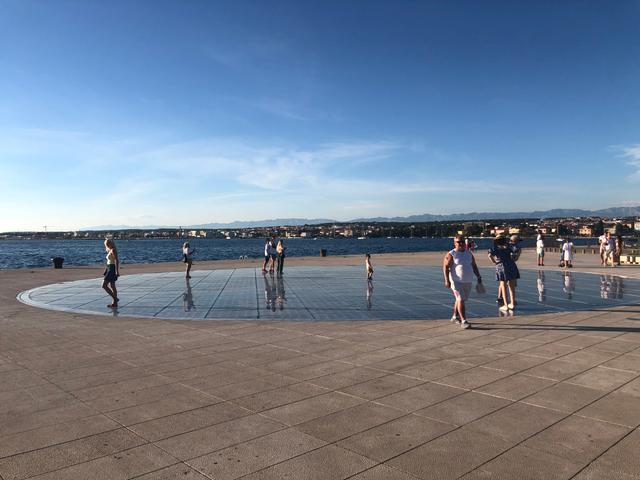Split - Ljubljana
Similar popular transfers:
Split to Ljubljana Private Transfer
The best way to go and visit Ljubljana is to book a private transfer from Split to Ljubljana.
MaciTours is a Croatian transfer service which offers the best prices for a minivan private transfer. MaciTours has at its disposal a fleet of luxurious and premium vehicles that will make your transfer as comfortable as possible.
Ljubljana is located some 460 km from Split and the duration of your transfer is about 5h.
The prices for a Split to Ljubljana private transfer start at 450 euros (the price per vehicle, not per person).
How to get from Split to Ljubljana?
Every summer You get asked How to get from Split to Ljubljana .You need to come fast and easily in Ljubljana. Like we mentioned above, the fastest and easiest way to get from Split to Ljubljana is to book a private transfer from Split to Ljubljana with MaciTours, Croatian transfer service. Private transfer between Split and Ljubljana You can book easily in less then one minute using our booking form. After You have made a successful booking You don't need to worry about anything.
That is not the only way How You can get from Split to Ljubljana . You can also take a bus which operates daily, average price is between 50-60euro per person and it drives about 7h00min. Another option is to take in Split but that will be more expensive then private transfer and You don't know what You can except.
A few facts about Ljubljana
Ljubljana is the capital and largest city of Sloveni and is the cultural, educational, economic, political and administrative centre of the country, situated at the middle of a trade route between the northern Adriatic Sea and the Danube region.
The origin of the name of the city is unclear. In the Middle Ages, both the river and the town were also known by the German name Laibach.
The symbol of the city is the Ljubljana is the Dragon, depicted on the top of the tower of Ljubljana Castle, in the Ljubljana coat of arms and on the Ljubljanica-crossing Dragon Bridge, as a symbol of power, courage, and greatness.
The Argonauts of Ancient Greece, according to the celebrated Greek legend, on their way back home, after having taken the Golden Fleece, found a large lake surrounded by a marsh, between the present-day towns of Vrhnika and Ljubljana.
Around 2000 BC, the Ljubljana Marshes in the immediate vicinity of Ljubljana were settled by people living in pile dwellings, where the oldest wooden wheel in the world was found.
The Romans built a military encampment that later became a permanent settlement called Iulia Aemona, around the year 50 BC.
In the 6th century, the ancestors of the Slovenes came to this area.
In 1895, Ljubljana, suffered a serious earthquake measuring 6.1 degrees Richter and during the reconstruction that followed, many city districts were rebuilt in the Vienna Secession style.
In 1918, following the end of World War I and the dissolution of Austria-Hungary, Slovenia joined the Kingdom of Serbs, Croats and Slovenes, later called Yugoslavia.
In 1941, during World War II, Fascist Italy occupied Ljubljana.
After the war, Slovenia became a part of communist Yugoslavia, and in 1991 it became independent, with Ljubljana as its capital.
What to see while in Ljubljana
The central square in Ljubljana is the Prešeren Square, where the Franciscan Church of the Annunciation is also located.
The Ljubljana Castle, a medieval castle with both Romanesque, Gothic, and Renaissance architectural elements, towers over the old city centre.
The castle was built in the 12th century and was a residence of the Margraves and later the Dukes of Carniola, while the castle's Viewing Tower dates back to 1848, when it used to be manned by a guard whose duty it was to fire cannons to warn the city in case of fire or announcing important visitors or events, something that has become a tradition, held to this day.
The Ljubljana Cathedral or St. Nicholas's Cathedral, located at Cyril and Methodius Square, nearthe Ljubljana Central Market and Town Hall, serves the Archdiocese of Ljubljana and is quite easily identifiable because of its green dome and twin towers.
The Nebotičnik (meaning "Skyscraper") is a thirteen-story building with a height of 70.35 m (231 ft), built in the 1930s, as combination ofNeoclassical and Art-Deco architecture. Predominantly it's a place of business, as the Nebotičnik is home to shops on the ground floor and first floor, while the offices are located on floors two to five, but the top three floors are a café, bar and observation deck.
Ljubljana is known for its many bridges, such asthe Dragon Bridge, the Butchers' Bridge, the Triple Bridge, the Fish Footbridge, the Cobblers' Bridge, the Hradecky Bridge and the Trnovo Bridge, almost all connecting the two banks of the Ljubljanica river.
There are also numerous museum in Ljubljana. The city has an architecture museum, a railway museum, a school museum, a sports museum, a museum of contemporary art, the Museum of Natural History and the Slovene Ethnographic Museum and there is also The National Gallery and the Museum of Modern Art which exhibit the most influential Slovenian artists.


















